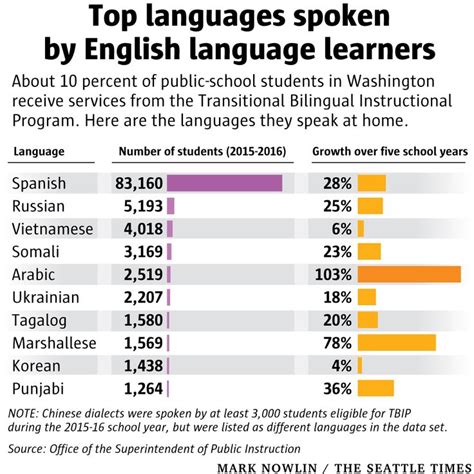Introduction
Languages are an integral part of human communication and understanding. They not only facilitate interaction but also provide a gateway to different cultures and perspectives. High schools play a crucial role in fostering language learning, offering a wide range of options for students to expand their linguistic horizons. This article delves into the diverse languages taught in high schools worldwide, examining their curriculum, benefits, and future implications.

The Prevalence of Language Learning in Secondary Education
According to the British Council, approximately 2.4 billion people worldwide are enrolled in secondary education. Of these, over 60% study a foreign language. This staggering figure underscores the importance placed on language learning in modern education systems.
The Languages on Offer
The specific languages taught in high schools vary considerably depending on the country, region, and educational institution. However, some of the most commonly taught languages include:
1. English
English has become the global lingua franca, used in business, diplomacy, and international communication. It is widely taught in high schools around the world, with an estimated 1.5 billion speakers.
2. Spanish
Spanish is the second most spoken language in the world, with over 500 million native speakers. It is particularly prevalent in Latin America, the Caribbean, and parts of the United States.
3. French
French is the official language of 29 countries and is widely spoken in Europe, Africa, and parts of North America. It is known for its elegance and cultural significance.
4. Mandarin
Mandarin is the most spoken language in the world, with over 1 billion native speakers. Its growing economic and political importance has driven increased demand for its study in high schools.
5. German
German is a major European language with a rich literary and cultural history. It is commonly taught in high schools in Europe and other parts of the world.
The Benefits of Language Learning
Learning a foreign language offers numerous benefits for students, both in the present and the future. These include:
1. Improved Cognitive Skills
Language learning enhances critical thinking, memory, and problem-solving abilities. It forces students to process information differently, fostering flexibility and adaptability.
2. Cultural Understanding
Languages are inextricably linked to culture. By learning a foreign language, students gain insights into different perspectives, customs, and values, promoting empathy and global understanding.
3. Career Prospects
In today’s interconnected world, proficiency in multiple languages opens doors to a wider range of career opportunities, particularly in fields such as business, diplomacy, and education.
4. Travel and Adventure
Language skills allow students to connect with people from all walks of life and experience the world in a more meaningful and enriching way.
Common Mistakes to Avoid When Teaching Languages
To ensure effective language instruction, it is important to avoid certain common pitfalls:
1. Focusing Solely on Grammar
While grammar is essential, it should not overshadow the communicative aspects of language learning. Students need opportunities to practice speaking, listening, reading, and writing in authentic contexts.
2. Neglecting Cultural Context
Language and culture are intertwined. Incorporating cultural insights into language instruction helps students develop a deeper understanding of the language and its users.
3. Using Ineffective Teaching Methods
Rote memorization and passive learning are ineffective for language acquisition. Teachers should employ interactive, student-centered approaches that foster active participation and meaningful engagement.
Future Implications of Language Learning
The demand for language skills is expected to continue growing in the future, driven by globalization, technological advancements, and increased cultural exchange. High schools will play a vital role in preparing students for the linguistic challenges of the 21st century.
1. Increased Demand for Language Teachers
As the need for language proficiency grows, so will the demand for qualified language teachers. High schools will need to invest in recruiting and training effective educators to meet this demand.
2. Integration of Technology
Technology can enhance language learning by providing access to authentic materials, facilitating communication with native speakers, and offering personalized learning experiences. High schools should embrace technology to support and augment traditional language instruction.
Conclusion
Languages taught in high schools provide students with a powerful tool for communication, cultural understanding, and personal growth. The diversity of languages offered allows students to explore different cultures and prepare for future opportunities in an increasingly interconnected world. By addressing common pitfalls and embracing innovative teaching methods, high schools can continue to equip their students with the linguistic skills they need to succeed in the 21st century.
Additional Resources
- British Council: Language Learning in the 21st Century
- UNESCO: Education for All Global Monitoring Report 2023
- American Council on the Teaching of Foreign Languages: National Standards for Foreign Language Learning in the 21st Century
